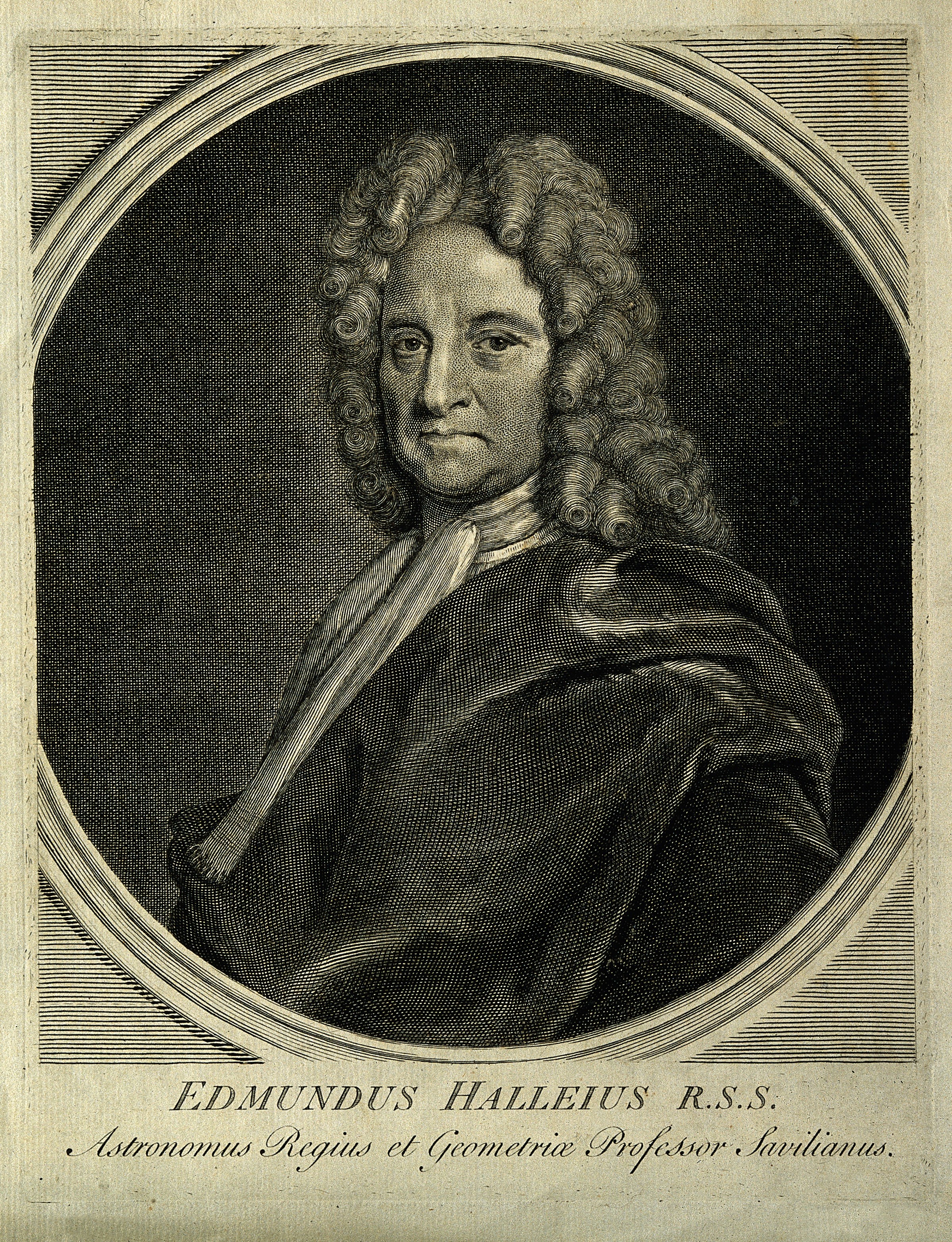6.3: Comets
( \newcommand{\kernel}{\mathrm{null}\,}\)
 Edmund Halley.
Edmund Halley.
https:/commons.wikimedia.org/wiki/File:Edmund_Halley._Line_engraving_after_R._Phillips._Wellcome_V0002535.jpg; )
Philosophers have debated the nature of comets for thousands of years. Some argued that they were an atmospheric phenomenon and were heavenly bodies like stars and planets. Many saw them as harbingers of doom or change. A comet appears in the First century, BCE just before the assassination of Julius Caesar. Another appears in 1066 before the Battle of Hastings where William the Conqueror defeated King Harold for the throne of England. China had records of cometary predictions going back millennia, but not until Edmond Halley successfully predicted the coming of the comet that now bears his name in the 18th century did astronomers in the West understand that comets return at regular intervals.
 Comet.
Comet.
Astronomers sometimes call comets “dirty snowballs” because they are made of mostly ice and rock. They orbit the Sun in highly eccentric orbits. Astronomers classify comets short-period and long-period comets. Short-period comets have an orbital period of less than two hundred years while long-period comets have a period of greater than two hundred years.
Spending most of their time in the outer solar system, comets only acquire their signature tails as they approach perihelion. As comets approach the Sun, the Sun’s rays ablate the ice, creating a wispy atmosphere called a coma. Jets erupt from the surface, carrying the dust and gas away. The steady stream of charge particles and the pressure from sunlight push the gas and dust in the coma, giving the comet its characteristic tail. Comets actually have two tails, one of ionized gas and one of dust. The solar wind pushes out from the Sun, so the tails always point away from the Sun. However, the more massive dust particles resist the push of the solar wind, so the dust tail behind the ionized tail.
Since comets loss mass to ablation every perihelion, they eventually fade away. Some do not even last that long, such as Comet Shoemaker-Levy 9, which died spectacularly in 1994 by crashing into Jupiter. But if comets disappear over time, how can we still have comets over 4 billion years after the formation of the Solar System? The answer lay in the Oort Cloud, a swarm of cometary bodies in interstellar space that surrounds the Solar System between 2,000 and 200,000 AU from the Sun. Oort Cloud comets rarely enter the inner solar system. Gravitational encounters occasionally nudge a comet, causing it to fall into an elliptical orbit taking it closer to the Sun. Because the Oort Cloud surrounds the Solar System in a spherical swarm, cometary orbits can vary a lot in their size, shape, and orientation once they get nudged into an elliptical orbit.
As noted in the previous section, comets that break up in the inner Solar System are responsible for the meteor showers we see at different times throughout the year.
 The orbit of Halley's Comet.
The orbit of Halley's Comet.
 Comet tail diagram.
Comet tail diagram.
https:/commons.wikimedia.org/wiki/File:Comet_tail_diagram.jpg;


